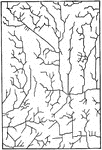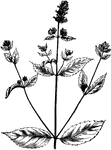
Camphor Tree
"An evergreen of the laurel family, having glossy leaves and bearing clusters of yellowish flowers,…

Banyan Tree
"This tree, a native of India, is remarkable for its vast branches. It is a species of fig; has ovate,…

Illustration of Roots and Jericho Rose
A small cruciferous plant, growing in arid Arabia and Palestine. When full grown and ripe its leaves…

Diagram of the Two Primary Lobules of the Lung
Diagram of the two primary lobules of the lungs, magnified. Labels: 1, Bronchial tube. 2, A pair of…
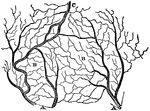
The Arteries and Veins of a Section of the Skin
The arteries and veins of a section of the skin. A, arterial branches. B, capillary, or hair-like vessels,…
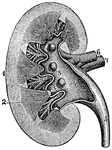
Longitudinal Section of a Kidney
A longitudinal section of a kidney. Labels: 1, 2, 3, Parts of the Kidney. 4, Pelvis. 5, Ureter. 6, Renal…

Diagram of the Structure of the Kidney
A diagram of the structure of the kidney. Labels: 1, Tubules or minute tubes. 2, Enlargement of a tubule…

The Sympathetic Ganglions and their Connection to other Nerves
The sympathetic ganglions and their connection with other nerves. Labels: A, The semilunar ganglion…
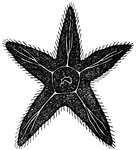
Diagram of a Radiata
In the Radiata, the starfish manifests one of the simplest forms of nervous systems. it consists of…

Streamlet Branching
"Normal twig-like branching of streamlets—the type produced in homogenous rock material when uninfluenced…

Streamlet Branchings
"Streamlet branchings of the abnormal type found in the area in and about the Pomperaug Valley. a and…

Nervous System
A representation of the brain, spinal cord and spinal nerve. Labels: 1, The cerebrum. 2. The cerebellum.…
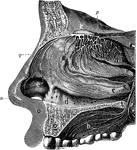
Olfactory System
The olfactory system. Labels: a, b, c, d, interior of the nose, which is lined by a mucous membrane;…
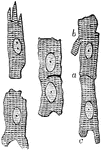
Muscular Fiber Cells from the Heart
Muscular fiber cells from the heart. The fibers which lie side by side are united at frequent intervals…

Striped Muscle Fibers of a Frog
Two striped muscle fibers of the hyoglossus of frog. Labels: a, Nerve end plate; b, nerve fibers leaving…

Pacinian Corpuscles in a Human
The Pacinian bodies or corpuscles are elongated oval bodies situated on some of the cerebrospinal and…

Pacinian Corpuscle of a Cat
The Pacinian bodies or corpuscles are elongated oval bodies situated on some of the cerebrospinal and…

Pacinian Corpuscle of a Human
The Pacinian bodies or corpuscles are elongated oval bodies situated on some of the cerebrospinal and…
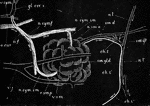
Submaxillary Gland of Dog with Nerves and Blood Vessels
Diagrammatic representation of the submaxillary gland of the dog with its nerves and blood vessels.…

Mucous Gland from Tongue
Section of a mucous gland from the tongue. Labels: A, opening of the duct on the free surface; C, basement…
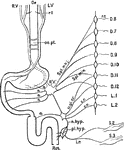
Nerves of the Alimentary Canal
Diagrammatic representation of the nerves of the alimentary canal. Oe to Rct, the various parts of the…
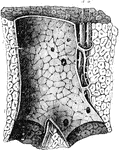
Portal Canal
Longitudinal section of a portal canal, containing a portal vein, hepatic artery and hepatic duct from…
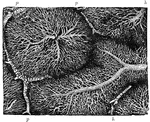
Capillary Network in the Lobules of a Rabbit's Liver
The liver is made up of small roundish or oval portions called lobules, each of which is composed of…

Sympathetic System
Diagrammatic view of the Sympathetic cord of the right side, showing its connections with the principal…
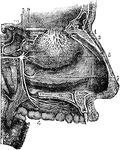
Nerves of the Nasal Fossae
Nerves of the outer walls of the nasal fossae. 1, network of the branches of the olfactory nerve, descending…
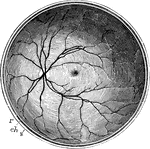
Posterior Half of the Retina
The posterior half of the retina of the left eye, viewed from before; s, the cut edge of the sclerotic…

Capillary Blood Vessels of Larval Frog
Capillary blood vessel of the tail of a young larval frog. a, capillaries permeable to blood; b, fat…
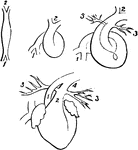
Fetal Heart in Successive Stages of Development
Fetal heart in successive stages of development. 1, venous extremity; 2, arterial extremity; 3, pulmonary…
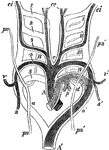
Aortic Arches in a Mammal
Diagram of the aortic arches in a mammal, showing transformations which give rise to the permanent arterial…
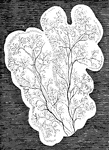
Lobules of Parotid of a Sheep
In mammalia, each salivary gland first appears as a simple canal with bud-like processes, lying in a…

Transverse Section Through the Thigh
Transverse section through the middle of the thigh. Labels: a, Rectus femoris; b, vastus externus; c,…

Construction of a Portion of Appian Way
A famous road with many branches which connected Rome with Southern Italy

Nerve Supply of Legs
Cutaneous nerve supply of legs. Anterior aspect. 1, ilioinguinal; 2, genitocrural; 3, external cutaneous;…
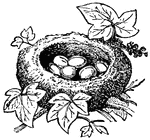
Nest of Kinglet
"The Kinglet, or Golden-Crested Wren, builds its nest among ivy or dependent from fir branches, generally…

Female Cicada Laying her Eggs
"Female Cicada Laying her Eggs in the Groove She has Bored in the Branch of a Tree. While the female…
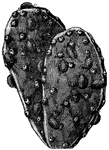
Cochineal Insects on the Branches of the Cactus
"The larvae are changed into perfect insects, which take up their abode permanently on the branches…

Broomrape (orobanche ramosa).
An annual plant , 6 to 15 inches high, with many slender branches of a brownish or straw color, more…

Posterior View of the Cutaneous Nerves of Trunk
The distribution of cutaneous nerves n the back of the trunk. On the left side the distribution of the…

Stick Insect (Phasma Rossia)
"They resemble so exactly dry sticks that it is impossible to tell the difference. It is an inoffensive…
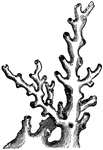
Oculina Virginea (Lamarck)
Oculina ranges from Cape Hatteras, North Carolina through the Gulf of Mexico and Caribbean, though the…
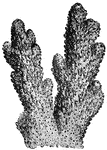
Madrepora Plantaginea (Lamarck)
"The Plantain Madrepore is an interesting species, the polyps presenting themselves in tufts, with slender…

Wheel Barometer
The wheel barometer consists of a siphon barometer, the two branches of which have usually the same…

Isis Hippuris
"A species of Isis has numerous slender branches, furnished with cylindrical knows at intervals,…

Skull Seen From Side
Shown is the inner aspect of the left half of the skull sagittally divided. Labels: 1, suture between…

Yule Celebration
Yule is a winter festival historically celebrated primarily in northern Europe but now celebrated in…

Pyramidal Cells of the Brain
The developmental stages exhibited by a pyramidal cell of the brain. Labels: a, neuroblast with rudimentary…

Distribution of Cutaneous Nerves on the Back
The distribution of the cutaneous nerves on the back of the trunk. On one side the distribution of the…
Cutaneous Nerves of the Back Legs
Distribution of cutaneous nerves on the back of the lower legs. On the one side the distribution of…

Plantar Nerves of the Foot
Scheme of distribution of the plantar nerves. Labels: I.P1, internal plantar nerve, and its cutaneous…

Development of the Spinal Nerve
Development of the spinal nerves. A, Formation of nerve roots. B, Formation of nerve trunk (N).C, Formation…
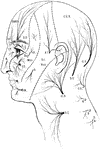
Sensory Nerves to the Head and Neck
Distribution of sensory nerves to the head and neck. Labels: Ophth, ophthalmic division of the fifth…
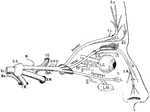
Ophthalmic Nerve
Scheme of the distribution of the ophthalmic nerve. Labels: Vs, trigeminal nerve, afferent root; Mo,…

Structure of the Liver
A diagram to illustrate the structure of the liver. A, arrangement of liver lobules around the sublobular…
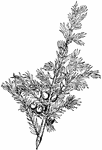
Juniper
Junipers are coniferous plants in the genus Juniperus of the cypress family Cupressaceae. Depending…
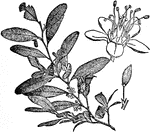
Coca Flower
Coca is a plant in the family Erythroxylaceae, native to north-western South America. The plant plays…
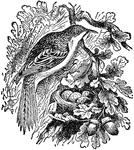
Brown Creeper
The Brown Creeper (Mohoua novaeseelandiae), also known by its Māori name, Pipipi, is a small…
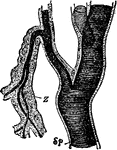
Tracheal Stem and Branches
Part of a tracheal stem and branches of an insect. Labels: Z, cellular outer wall; SP, cuticular inner…
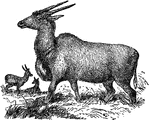
Eland
The common eland (Taurotragus oryx, also known as the southern eland) is a savannah and plains antelope…
